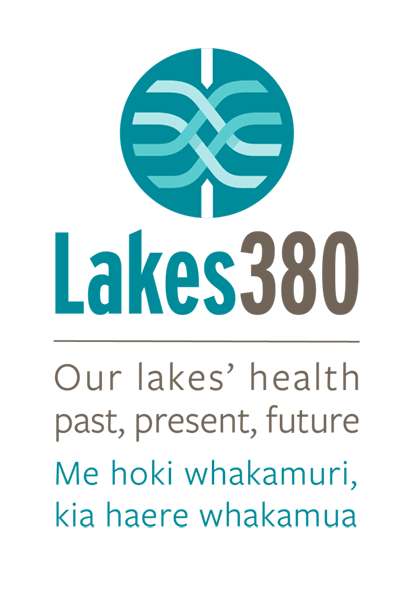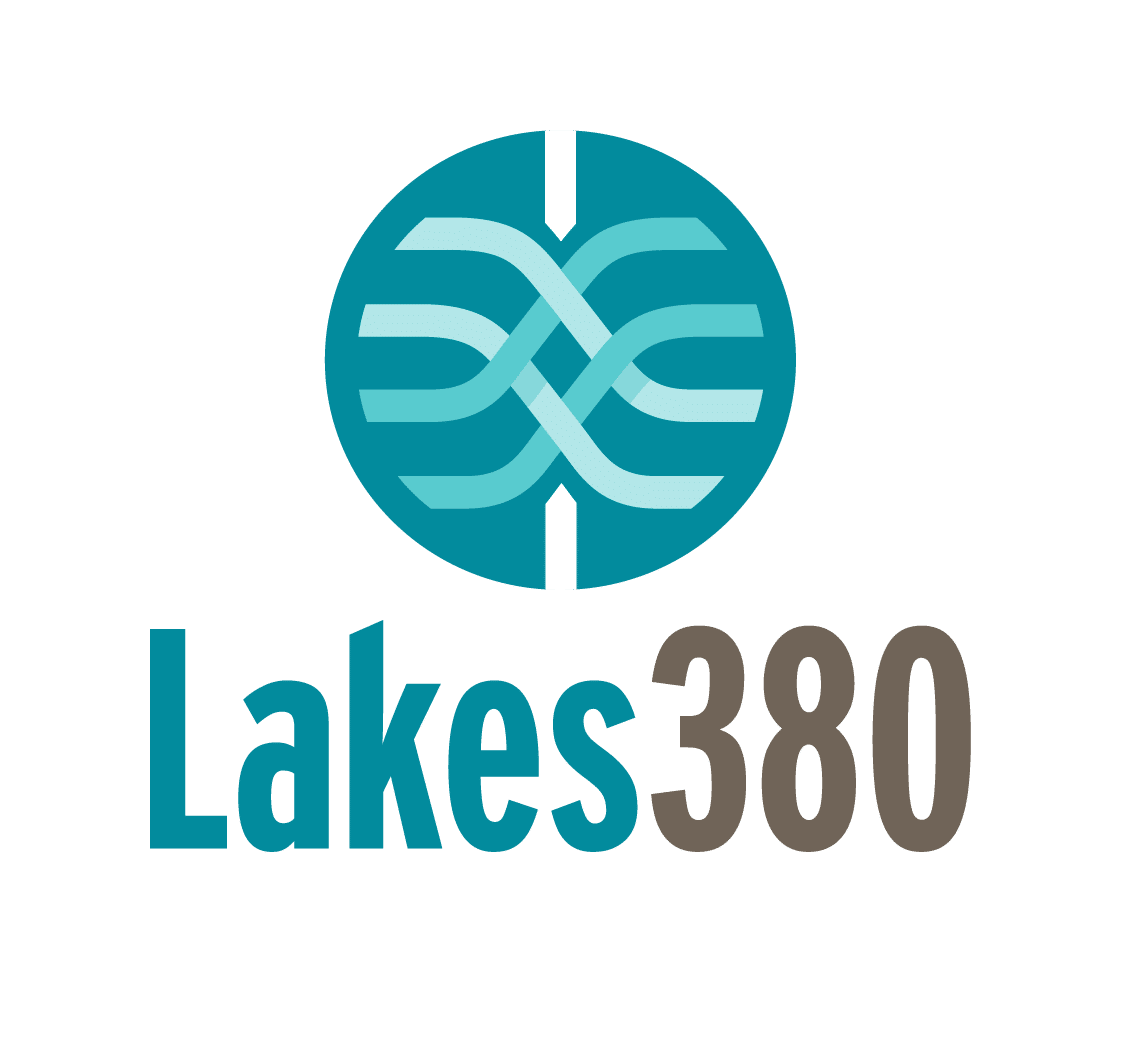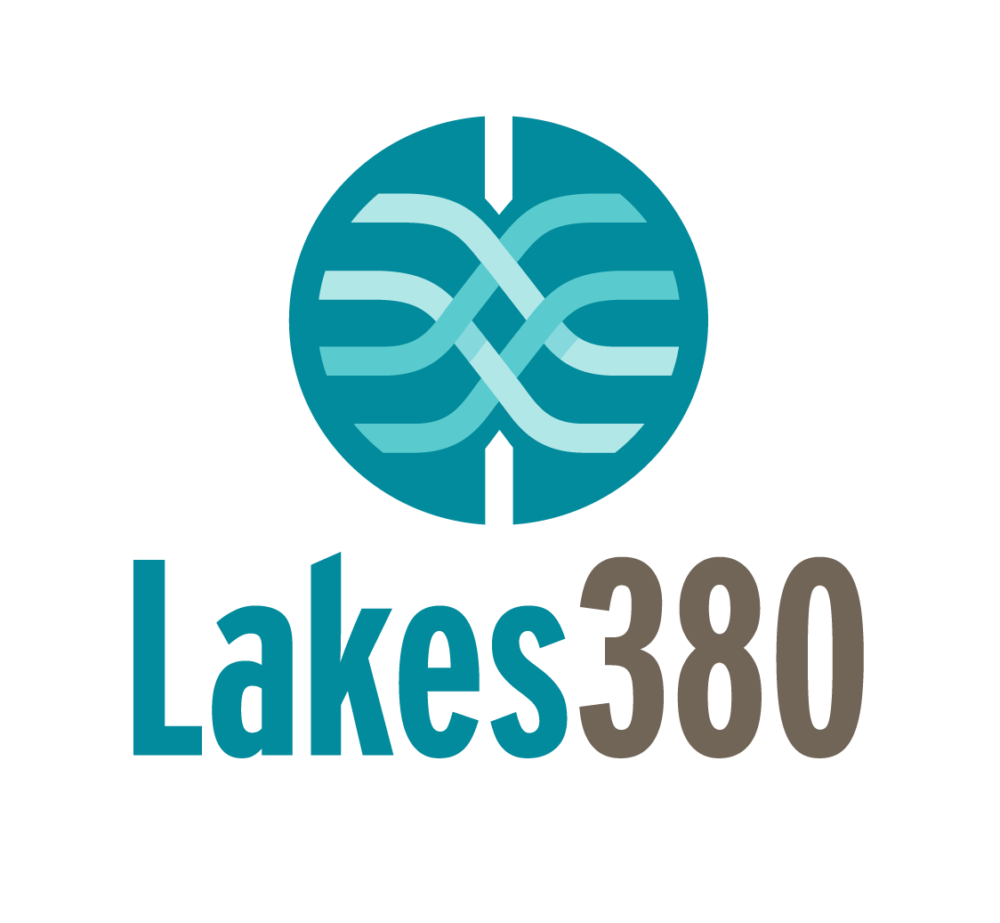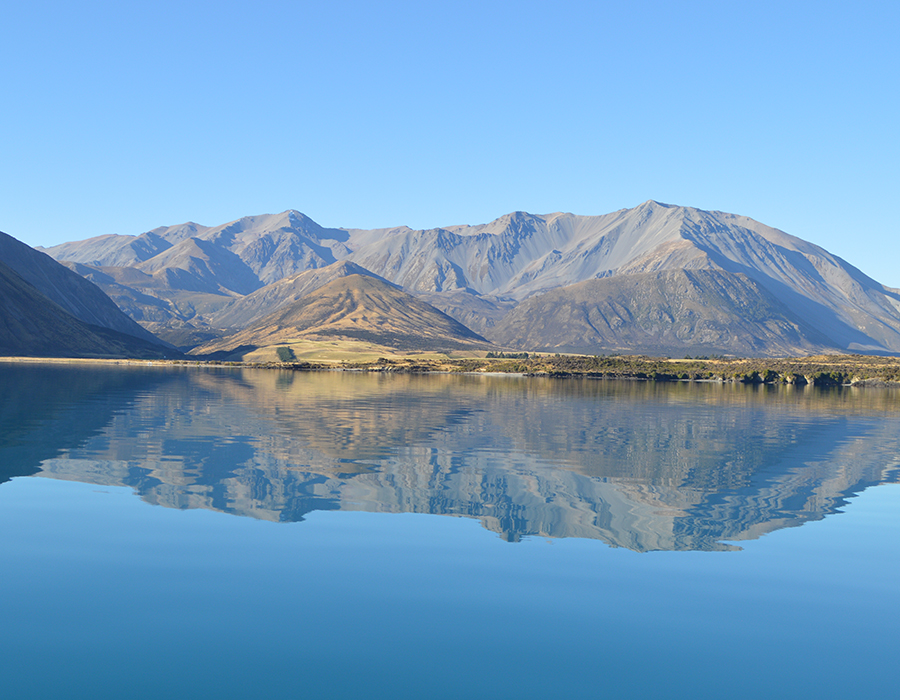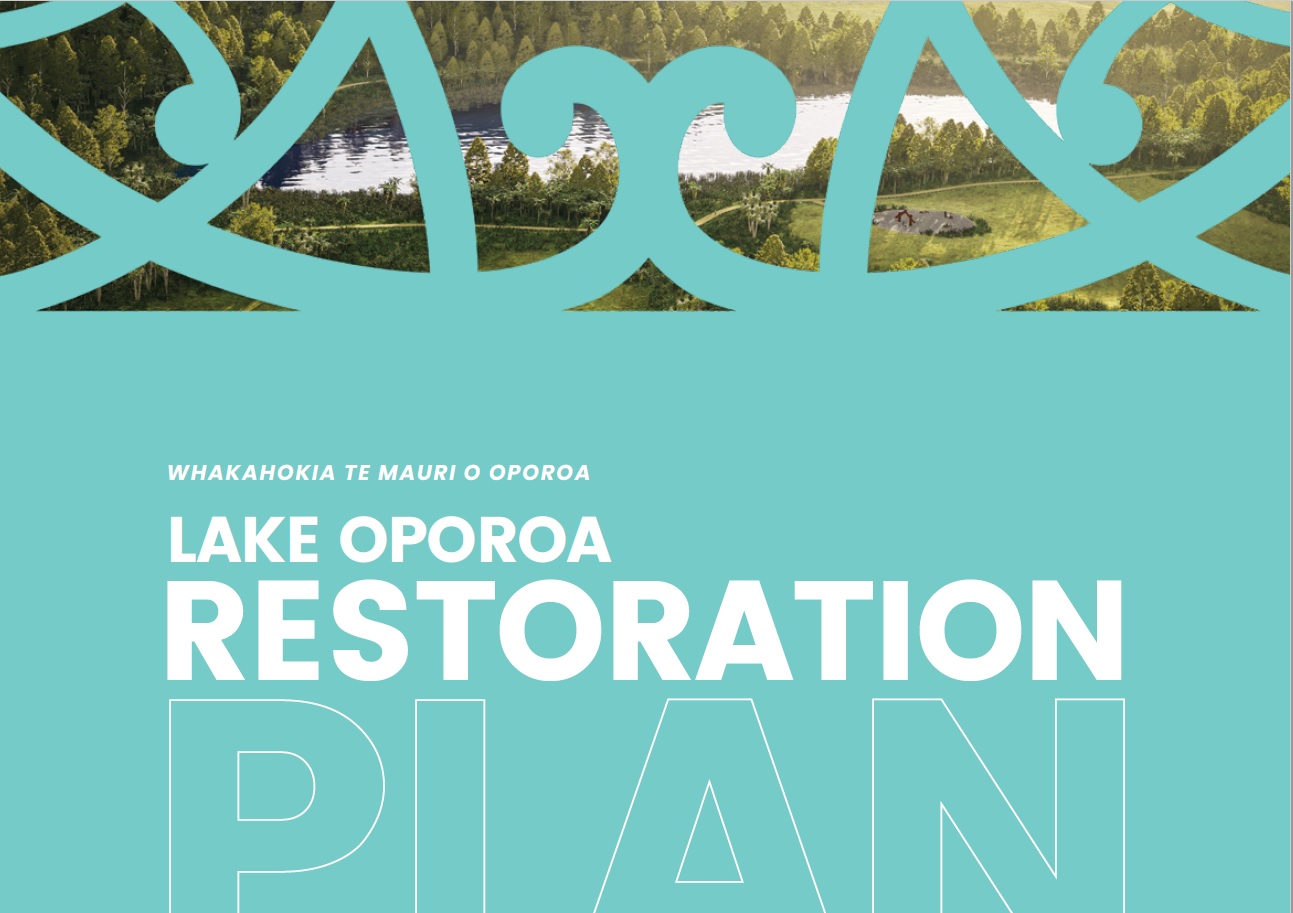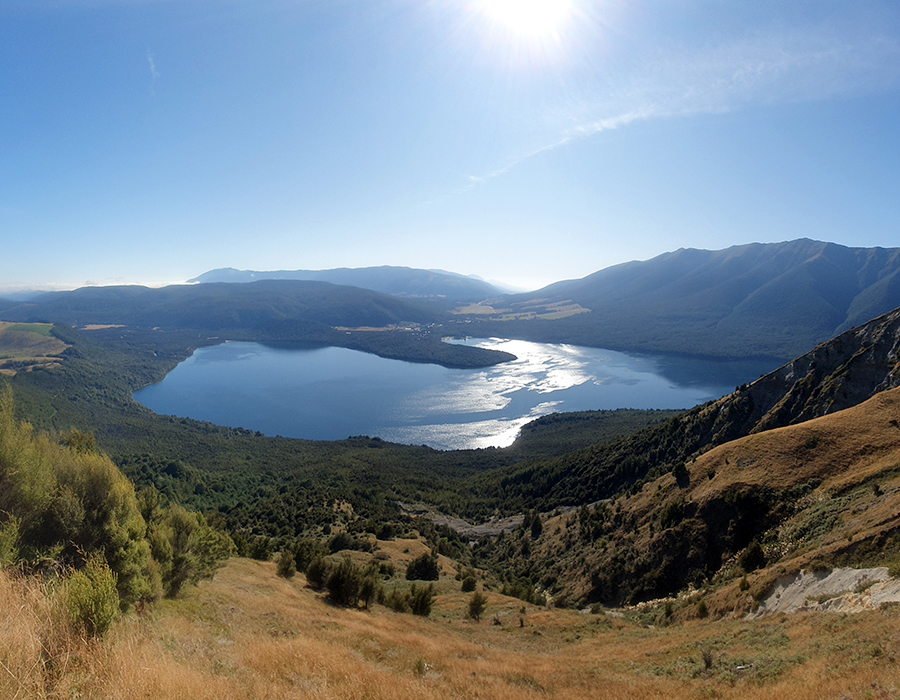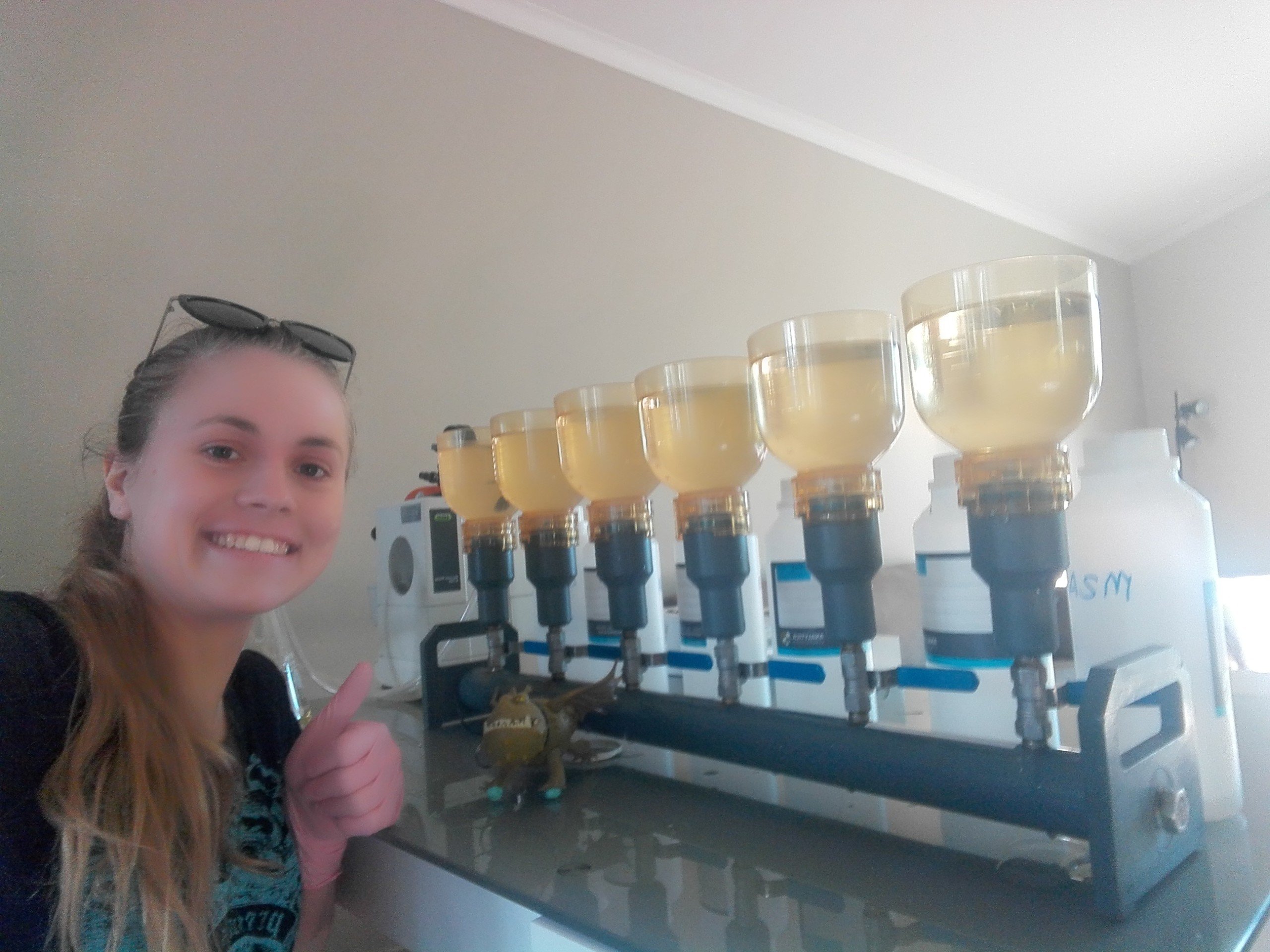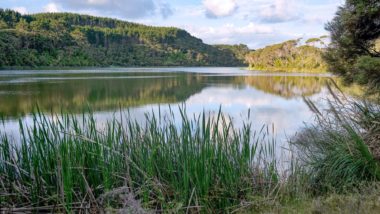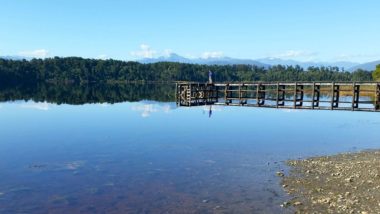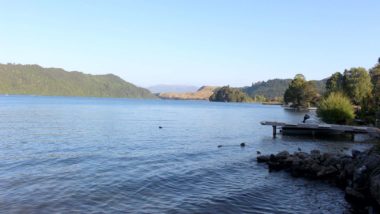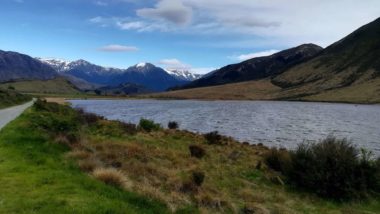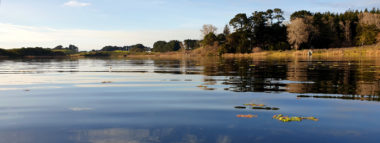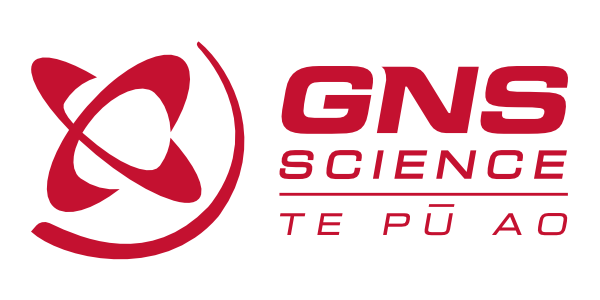McKayla Holloway, Cawthron Institute
The cold morning mountain air filled my lungs as the sun broke over the mountain tops. I tucked myself into a corner of the boat as Jamie and Sean busied themselves opening and closing mysterious black boxes fill of technical equipment. My mind wandered to the terrain that encompassed us. Lake Coleridge and the surrounding landscape has formed over thousands of years with help from huge glaciers, earthquakes, landslides, wind, snow and rain.
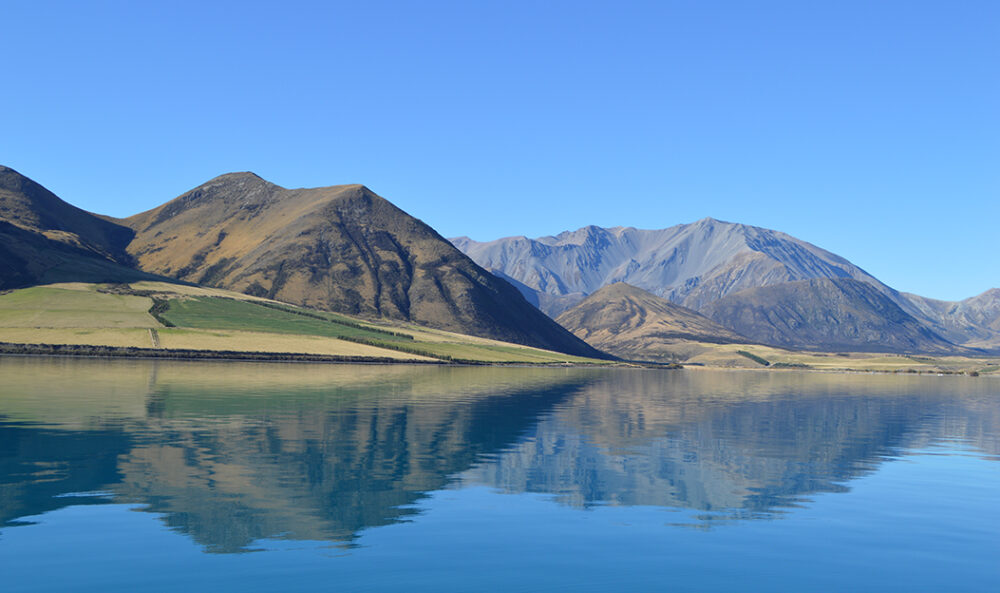
Unseen, below turquoise waters the geomorphological features continued for another 200 meters to the lake floor. We were here to sample the unseen, the top six meters of sediment below the lake floor. These samples will help us to start piecing together the history of Lake Coleridge and its surrounding landscape.
Deep lakes like Lake Coleridge require an alternative coring system to Lake380’s standard percussion method and a specialised team. Only a handful of Lakes380’s, 300 lakes have been sampled using this method. The deep lake sampling team is a tight knit crew. The wider Lakes380 team has little insight into their work, other than the fact they drink a lot of fancy coffee in the field. To get the inside scoop I invited myself along on their latest coring trip.
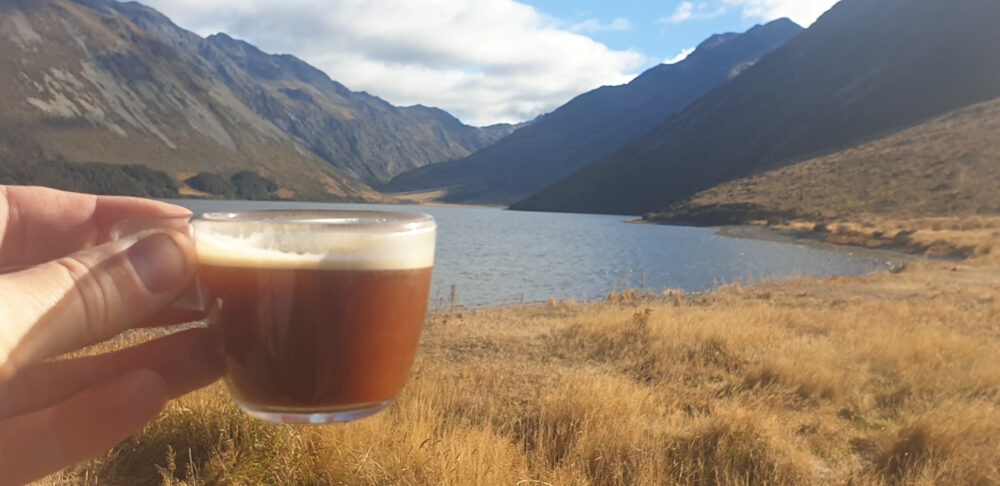
On a regular Lakes380 trip it’s not uncommon for the field team to sample 2-3 lake per day. I nearly choked on my lunch when I discovered that we’d be sampling 4 lakes (Lake Coleridge, Lake Tennyson, Lake Rotoiti and Lake Rotoroa) over 12 days. That’s one lake every 3 days, this field trip was going to be more like a holiday than work! In anticipation for this ‘holiday’ I packed two books, my laptop and downloaded a stack of podcasts to pass the time. Turns out I couldn’t have been more wrong, we worked from dawn to dusk and I arrived home without opening a book or listening to a podcast. While, I didn’t learnt anything from material I packed here’s what I did learn:
Collecting long cores from deep lakes is a complex task with many moving pieces. This is why two to three days are allowed for sample each lake. Turns out more core is collected per meter for each day of the field trip when compared to our standard coring method despite sampling less lakes. I guess that’s why I didn’t feel like I was on holiday!
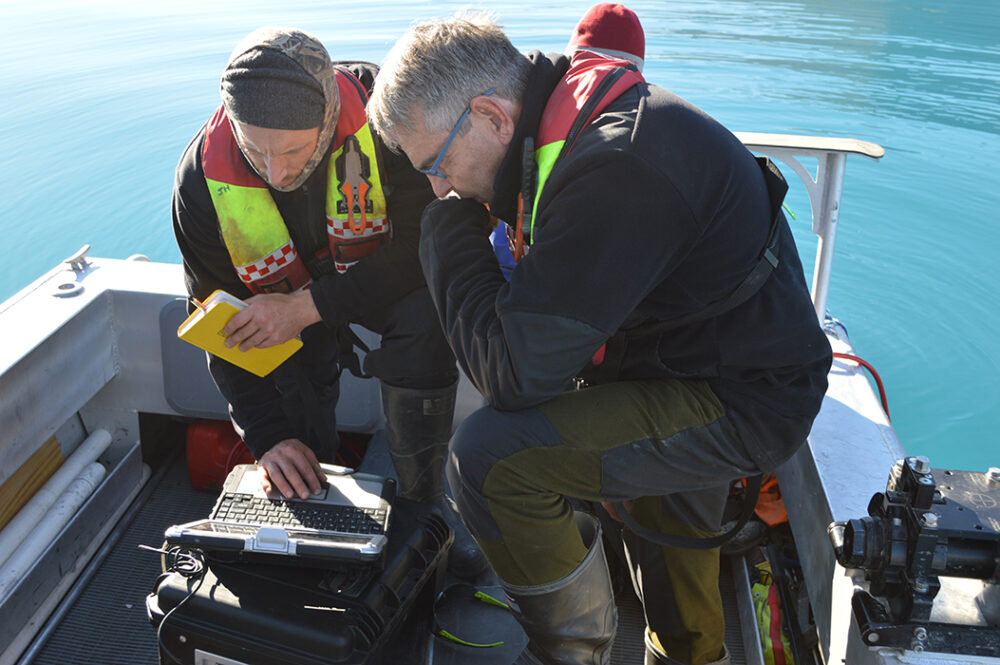
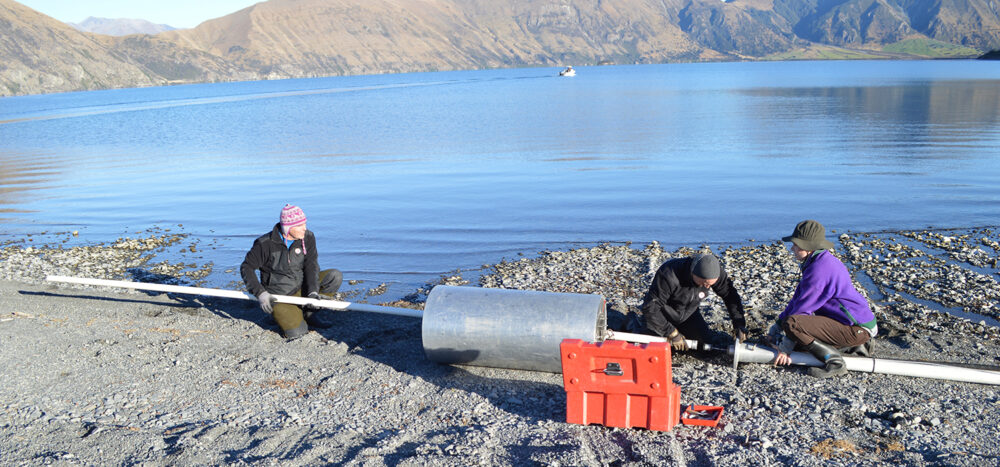
We got a master class in composure. With $100,000 of coring equipment glued to the lakebed 200 meters below and retrieval plan A,B,C and D proving unfruitful, Jamie and Sean remained unflappable throughout the six-hour ordeal. Jamie and Sean remained unflappable, throughout the six-hour ordeal. In the end, both brains and brawn won on the day resulting in ear-to-ear smiles and a little yahooing as the corer finally rose from the depths.
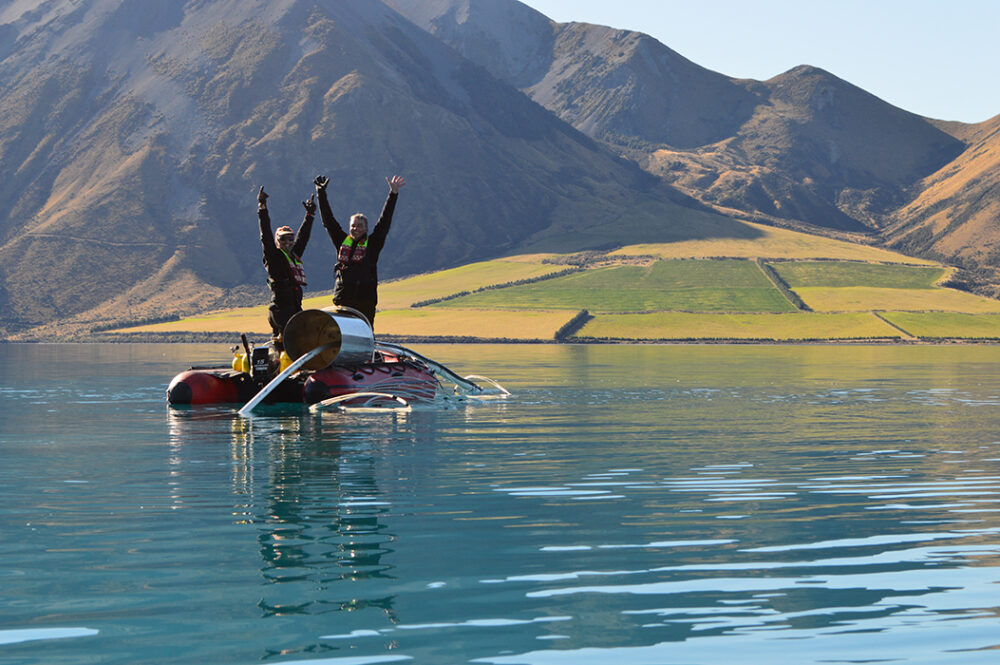
The sense of community and the willingness to drop everything to help those in need is still alive and well in Christchurch. We’d grand plans of make a campfire on the shores of Lake Tennyson but the only smoke we encountered was that from our trailer’s tyres. We found ourselves near the middle of Christchurch with a brake calliper that wouldn’t release. A quick Google search and a slightly panicked phone call to the closest trailer dealer and we found ourselves in the capable hands of Elite Trailers & Floats Ltd. While, they don’t deal with hydraulic break systems they downed tools to help us out and refused any compensation for their time. A huge thanks to Keith and Debbie Gordon and your team for your help!
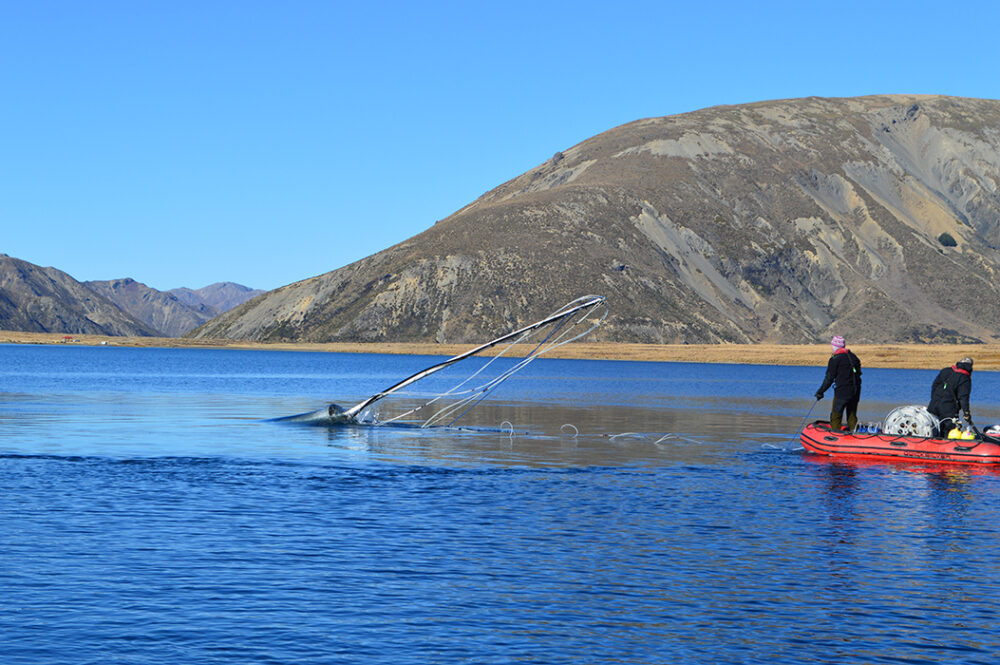
On a calm still morning on the shores of Lake Rotoiti we had the privilege of hearing about the rich cultural and natural history of the lake from local iwi and the many friends of Rotoiti. Meeting those who have connection to the lake and hearing their stories has (unexpectedly) been the most rewarding part of this project for me.
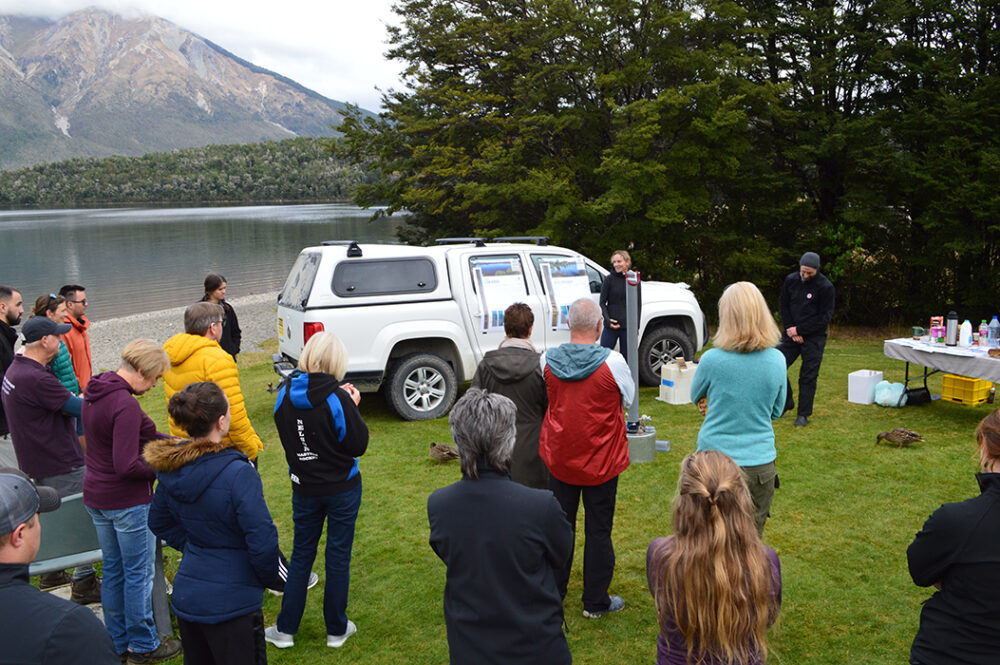
As is commonplace on all field trips we encounter many unexpected events. With a team of highly capable people any that arose was dealt with efficiently and an abundance of banter promptly followed. We didn’t quite manage to get all the samples we wanted, that’s now a job for next month.
